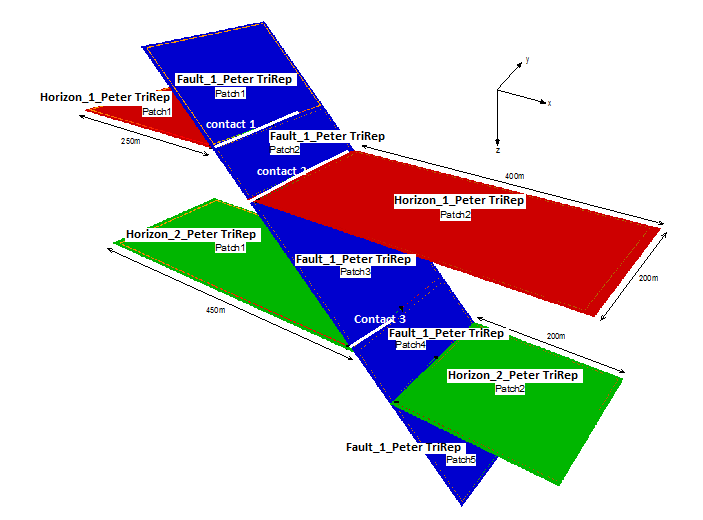9.3.1.2.2 Creating a Structural Organization Interpretation and a Non-Sealed Surface Framework Representation
| Topic Version | 1 | Published | 09/11/2015 | |
| For Standard | RESQML v2.0.1 | |||
At this step, the asset team must compare both interpretations and decide whether to follow Paul's hypothesis or Peter's. For this example, we'll follow Peter's less optimistic hypothesis.
Software C imports Peter’s structural organization interpretation and all of his individual interpretations/representations with the objective to build a first non-sealed surface framework representation with this set of interpretation and representation data objects.
The first task is to complete Peter's structural organization interpretation. To do this, we need to order the horizon interpretations (by age or apparent depth) and we need the contact relationships between the horizons and faults.
For this example, we define a Rank1 containing only the Horizon 1_Peter interpretation and a Rank2 containing Horizon_1_Peter and Horizon 2_Peter interpretations.
Each of these horizon interpretation is represented by two patches; the fault Interpretation is represented by one patch, and the contact patches are represented by a succession of (x,y,z) nodes (Figure 9.3.1.2.2-1). (For more information on patches, see 6.3 Patches .)
In fact, very often, no specific representation will be created during this sub-step; Software C will export an EPC_2 containing a consistent working set on which only one representation is chosen for one interpretation and only one interpretation of a feature contributes to building its structural organization interpretation.
This EPC_2 can be used as a starting point by 3D grid builder software to produce a reservoir grid or by a more sophisticated structural modeler to build a sealed surface framework (Software D, in this example).
